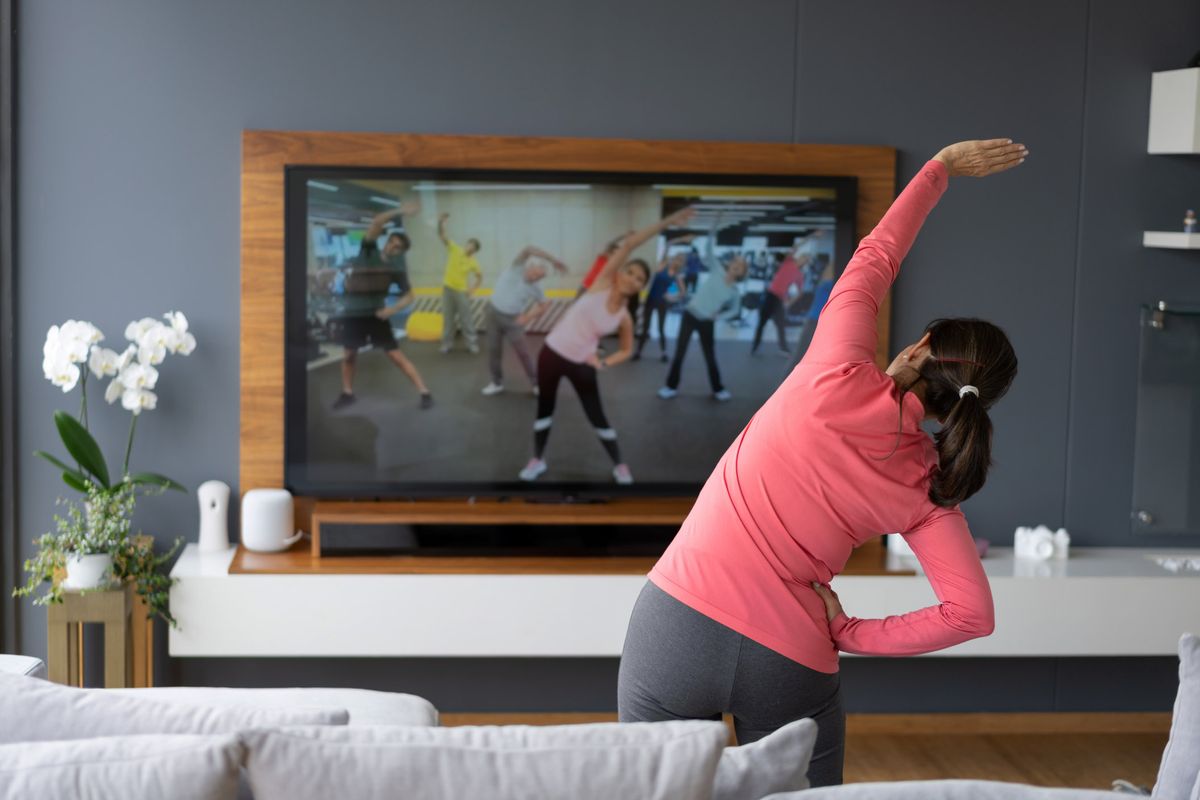Your best friend loves her step aerobics class. One of your co-workers swears by bike riding. And your cousin rarely misses her morning run at the local school track. All these people swear you'd benefit from their favorite activity. But which of those exercise programs—if any—would really be right for you?
You might be thinking about beginning a new plan for physical activity. You could be an exercise drop-out or are ready to switch from what you've been doing. You may even have been procrastinating for a long time about starting to exercise.
Jumping into a program because someone else loves it isn't the answer. "Unfortunately, exercise is hard, and it's not a one-size-fits-all phenomenon," says Danielle Symons Downs, PhD, assistant professor of kinesiology and obstetrics & gynecology and director of the Exercise Psychology Laboratory at The Pennsylvania State University, University Park, PA.
The proof of that truth is found lurking in closets everywhere—as barely-used hand weights, Pilates mats and swim goggles gather dust in memory of good intentions gone awry. Indeed, as many as 50 percent of women who begin an exercise program drop out during the first three to six months.
Finding a plan you enjoy and are able to stick with takes more than just luck—it takes careful choice. You'll have a better chance of succeeding with exercise if you take the time to ask yourself these vital questions:
What's my current health picture?
Conditions such as high blood pressure, diabetes, heart disease, asthma, cancer or obesity won't keep you from exercising, but you may need to choose your activity and pace carefully. Talk with your health care professional first.
If you've been sedentary, your body isn't ready for a five-mile walk even if your health is fine and your spirit is eager. Start slowly, with shorter sessions at lower exertion levels. Warm up briefly and do gentle stretches afterward to avoid injury.
Why do I want to be more physically active?
If exercise is appealing because you're hoping to look better, you may be setting yourself up for discouragement. "One of the pitfalls of focusing on improved appearance is that physical changes in weight and muscle tone take much longer and require more effort than might be expected," says Christy Greenleaf, PhD, assistant professor of kinesiology, health promotion and recreation, University of North Texas, Denton, TX.
When that goal isn't reached quickly enough, Dr. Greenleaf says, people don't stick with their exercise plan. Focus on other benefits instead and you're more likely to succeed. "Being physically active for improved health, enjoyment, stress relief and socialization are all (positively) related to long-term adherence," says Dr. Greenleaf.
What do I consider exercise?
Do you think of exercise as a tortuous hour of high-intensity aerobics or knee-pounding jogging? That negative picture takes a toll on your determination to be active. You'll get a good workout from gentler activities, such as walking, gardening or using an impact-free elliptical machine.
To heighten the fun factor, choose an activity you find interesting and keep your sessions short, especially when starting out (10 or 15 minutes per session, to add up to 30 minutes on days you exercise). If you're not used to being active, build your self-confidence at home rather than by joining a gym. "That atmosphere can be fun, but often not for women who have never done it before," says Dr. Symons Downs.
Pick activities that match your skills. Don't push yourself to do too much too quickly, or you'll end up with muscle pain or injury, both of which can discourage you from continuing to exercise.
How committed am I to doing this activity regularly?
It's important to consider the source of your commitment to exercise—are you doing it for yourself or because other people are telling you to do it? Having a self-driven commitment will help you find ways to keep your program going.
How convenient is this exercise program for my life and schedule?
You may have loved swimming in college, but finding a block of time to get to a pool, change, swim, shower and change again might not fit into your life right now. Expense, distance from your home or work, and availability are other factors in judging the convenience of the exercise program you're considering.
For women, "life gets in the way" of exercise, says Dr. Symons Downs, whose research focuses on exercise during pregnancy and the postpartum period. Instead of giving up on the idea of physical activity, think about making it more convenient. Schedule 10 minutes of indoor walking for before the kids get up in the morning or at lunchtime, behind a closed office door. "Anything is better than nothing," Dr. Symons Downs says, adding that leg squats, abdominal crunches and push-ups are all quick to fit in during TV commercial breaks.
How would I get back on track if my schedule was disrupted?
Evaluate your exercise plan on a week-by-week basis to schedule the best times for activity. Plan for the inevitable by working out what you would do—call a babysitter, change the time you exercise, etc.—if your routine hits a setback.
Whatever you do, don't throw in the towel. "Just because you missed a day of activity or could not be as active for as long as you had planned does not mean that you should give up or all is lost," Dr. Greenleaf says. Instead, prepare for how you'll handle the interruption if it occurs again.
Is there anyone who will exercise with me?
When you exercise with another person or a group, that social support can help reinforce your adherence to physical activity. Dr. Greenleaf suggests starting a walking group with friends or making exercise part of your family's routine activities.
What can I do to begin?
Take the first step by answering these questions and developing a realistic plan for your new program. Set specific, manageable goals, such as walking for a total of 30 minutes (cut into shorter sessions if necessary) on three days each week.
Consider potential barriers to being active and how you will deal with them. Bad weather? Find a welcoming indoor environment at a school, mall or even at home. Shuttling kids to their activities? Use the waiting time to walk around the gym or field, do stretches or work with small hand weights.
Keep track of when you exercise and why you miss sessions. Review weekly to make changes that will help keep you active. Set more challenging, yet attainable, goals as you progress.







